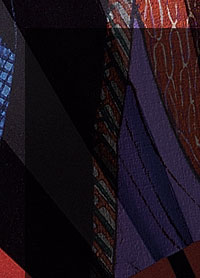 |
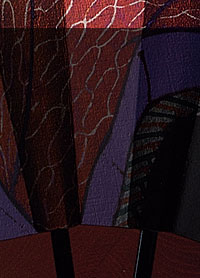 |
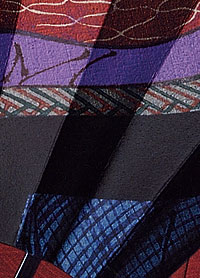 |
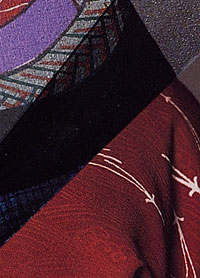 |
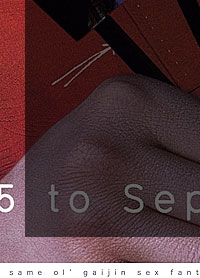 |
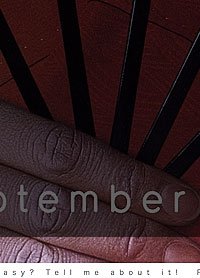 |
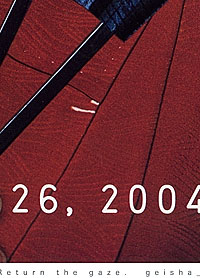 |
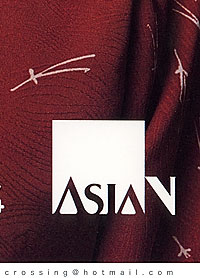 |
Generating Dialogue
Along the bottom of the posters and flyers in tiny type appeared the words: "Sick and tired of the same ol' gaijin sex fantasy? Tell me about it! Return the gaze. geisha_crossing@hotmail.com"
In response, geisha_crossing received a number of e-mails at this anonymous address. Selected messages and my replies are linked below:
>So-called "western geisha"
>University art historian
>Journalist from Nichi Bei Times
>Japantown community member
Prompted by this dialogue + photos of the action, the local paper of record chose to cover the story, leaving the Museum with no choice but to respond:
>>Media Access
From : [name withheld]@uclink.berkeley.edu
Sent : Tuesday, September 28, 2004 7:24 PM
To : geisha_crossing@hotmail.com
Subject : Your intervention
Dear Geisha Crossing,
Congratulations on your provocative and quite impactful intervention in the AAMSF's recent Geisha exhibition. I gather from sources inside the museum that you have really hit a nerve.
Your intervention was also timely as my class, Art and Architecture of Japan, here at UC Berkeley, has been studying works included in the exhibition and thinking about the exhibition concept and museum space.
Your voice is a welcome addition to what should be a larger debate about "Geisha," images, audiences, representation, museums, neo-Orientalism, and so forth. Would you be willing to elaborate upon the argument you introduced through your Guerrilla Girl-like foray into the museum? Might I pass on to students a larger statement, manifesto even? Do you plan for additional acts?
Sincerely (and with admiration),
[name withheld]
*********************************
Department of the History of Art
U.C. Berkeley
Berkeley, CA 94720 USA
*********************************
---------------
From: "Geisha Crossing" geisha_crossing@hotmail.com
Date: Fri, 01 Oct 2004 10:04:48 +0000
To: [name withheld]@uclink.berkeley.edu
Subject: RE: Your intervention
Dear Prof. [name withheld],
Thank you very much for your response to my work. It's rewarding to receive recognition from someone in your position, and also to hear the impact my work had on the museum.
"Being an artist for me seems to be a matter of constant doubt."
-- Manuel Ocampo
I don't have a formal argument to put forth, and I don't really believe in manifestos. I believe in a socially engaged practice of art that is grounded in lived experience. I did this because it was something I wanted to do--something I had to do.
I'd like to point out to your students that what I did, anyone can do (reject the mythology of the artist as possessing some sort of innate "genius"). A simple, accessible, inexpensive production can affect the institutions of the Art establishment and engage one in cultural discourse.
The technology that enables this sort of action has become very accessible, so long as one stays away from top dollar state-of-the art. I used simple tools: a point and shoot digital camera, a crappy scanner (the kind they sell at thrift shops for $6), an inexpensive photo printer (you can buy them for $99), a 5-year old mac, and an old version of photoshop.
Unlike learning how to paint, using these tools does not require years of practice to achieved desired goals. Those who have grown up computer literate should be able to jump right in. I've never taken a photoshop class, just learned what I needed to do (a few simple functions: levels, layers, eraser, color adjustment) to get the job done.
The main challenge is ideas and being willing to put it out there. But they are upper division Cal students, so what's stopping them? If they have something to say about the world they live in, if they want to engage in cultural production, or cultural jamming, there's nothing to stop them, other than the conditioning that unfortunately often comes from our educational system, along with the culture we live in.
NOTE: if you do this, make sure you document the action, digital stills at least, or if you can get someone else to shoot video even better.
Alright, that was my public service announcement.
Regarding my work, would it be more useful for the educational process to provide commentary through questions? I offer no answers, but seek to raise issues and promote dialogue.
Perhaps some of these questions are worth raising with your students:
When a museum engages in cultural appropriation of Other cultures, what impact does it have on local communities of color?
How are our cultural perceptions of Others shaped by phenomena such as the geisha ad campaign? If meaning is a function of context, is there adequate context provided in the presentation of this geisha ad image to avoid refueling tired stereotype?
And, perhaps most poignantly, how are Others' perceptions of themselves affected by the pervasiveness of this image?
I guess the basic question is: What impact could the presence of the geisha exhibit and its promotional images have on real social conditions of local people's lives, in particular those that are most closely associated with the symbol of the geisha?
What responsibility, if any, does the museum have in all of this?
Does the presence of a contextualizing essay in the museum catalogue, such as Liza Dalby's "The Exotic Geisha", offer an effective counterbalance to the social impact of the institutional presence of the exhibit and ubiquitous media presence of the image?
Gaze: There was a small section of the exhibition devoted to "geisha through western eyes" or something like that. Was not the entire exhibit looking at geisha through western eyes? Whose gaze was operating, being served? Does the power dynamic that informs this gaze reinforce the same structures of domination that we've seen elsewhere, in the treatment of other Others, throughout the history of Western Civilization?
Are there more enlightened and equal models for exhibition of works of Others? How about the new National Museum of the American Indian in DC? How has that been treated by the media: in the Wash Post it looks promising, but the NY Times attacks it for not being scientific/rational enough. Is Scientific Truth still the measure of quality for museum exhibition in 2004? Whose cultural value is that and what gives it authority over all others? Universal Truth in 2004? How does this relate to the geisha exhibit and my
intervention?
A Particular Kind of Truth; As the Culture Wars Rage, a Rare Victory Over Routes of Knowledge - Philip Kennicott, Washington Post 09/19/04
Museum With an American Indian Voice - Edward Rothstein, New York Times 09/21/04
But I digress.
There is another component to my art action--another site--of which you may not be aware, which creates a larger and I believe more meaningful context for understanding the work. I have all of it documented in digital photos. Before I go further, I'd like to provide an opportunity to build trust in our relationship:
Whatever additional details or information you could provide on the impact of my work inside the museum, without informing them of our contact, would be greatly appreciated.
Do you read your e-mail on weekends?
Best regards,
Geisha Crossing
p.s. I'm facing a big deadline, so my communication may be erratic.
-----------------
From : [name withheld]@uclink4.berkeley.edu
Sent : Monday, October 4, 2004 9:57 PM
To : geisha_crossing@hotmail.com
Subject : RE: Your intervention
Dear Geisha Crossing,
Many thanks for your response, with its preface from Manuel, encouragement to CAL students, and incisive commentary on the real life issues raised by the Geisha show and others like it (I've been mulling over recently the varied pieces on the National Museum of the American Indian)! Your response to Liza Dalby is also a compelling
statement of the impact of exhibitional culture. I can't but look forward to responses (if any) from AAMSF.
Our discussion of your intervention/challenge to the museum in class and discussion sections seems to have aroused in some students a more critical sense of the museum as a place of authority but also of debate-- that an exhibition can be a matter of controversy, of diverging viewpoints, and of deep personal and emotional impact was a new idea for many. I noted that your intervention was not merely a prank but a voicing of critical opinion that related the world inside the white box to the world without, something that, as you say, each to do (even when we feel silenced,
invisible by the museum's authority).
My contacts within the museum, who brought your act to my attention, have reported only briefly on what went on, and what I can give you therefore is really only hearsay. What I gather is that your originals were quickly snatched up by museum personnel but that photocopies also circulated more widely among the staff. Anger and consternation were apparently evident on the part of the curators and director; in other departments there was what sounds like thoughtful discussion and debate about the issues you had raised. I myself am quite curious about how many visitors picked up the infiltrated brochures and what their responses were. One student also discovered that you had placed brochures at Japan Town locations. Other than that, I don't have specific information to give you.
A few other thoughts.
There has been discussion amongst scholars of the art history of Japan about the exhibition-- many have found it disturbing and we are in our different ways forming and making responses. I myself find that the exhibition succeeded to some extent in expanding the visuality of "geisha" by incorporating premodern and modern images,
including 19th-c. orientalist photographs and postwar movie posters, and by addressing the formation of the Western fantasy of the geisha as submissive sex toy (as you no doubt know, the subject as treated in museums is typically focused on "Ukiyoe" representations to the exclusion of other images and has rarely confronted the modern myth of the geisha). The exclusion of pornography, however, while perhaps understandable in a public institution, created a sanitized effect that undercut the "libidinal economy" and discursive nature of Edo period print cultures.
But most glaringly, perhaps, by ignoring that, as images, the prints, paintings, posters, photographs, are constructs like any other image (and are not "documents" that give us a mirroring of actual individuals and fixed meanings about their lives and minds), the exhibition throws a very heavy hand across a complex spectrum of visual cultures, reducing them to a reductive and almost self-congratulatory, reaffirming category that hovers beyond issues of race, sexuality, violence. As you note, the catalogue expands the discourse beyond what the galleries and their didactics presented but is problematic in its content (recurring slippage of definitions and categories) and in its dislocation from the rhetoric of the exhibition as it extends beyond the gallery space through its decontextualized advertisements (the fact that a huge billboard ad was purchased along 101 in the center of SF is evidence of the massive marketing effort of the museum-- they new it could have a huge draw if pitched in a particular way). I am somewhat troubled by the implication, as I see it, that the geisha fantasy is merely a product of imperialism/ colonialism/neo-colonialism-- there is indeed a thick ethnography of orientalism and ongoing fetishization, but arguably there is also reason to examine the destructive stereotype as it operates in modern/postmodern Japanese popular culture (look, for instance, at the photography of Araki Nobuyoshi which, aside from its great appeal to many Western viewers, has also found considerable purchase and profit in Japan). One surely wishes to learn the responses of feminist and human rights groups working and writing in Japan to the geisha fantasy and its representations in contemporary popular culture and official museum culture in Japan.
In any case, it would be of great interest to many of my students, I believe, to make your responses-- to myself and Ms. Dalby-- available; would you permit me to post your unaltered texts to a course website or print them out for the class?
Best wishes, and thanks again for your responses.
[name withheld-- same UC Art History Prof].
